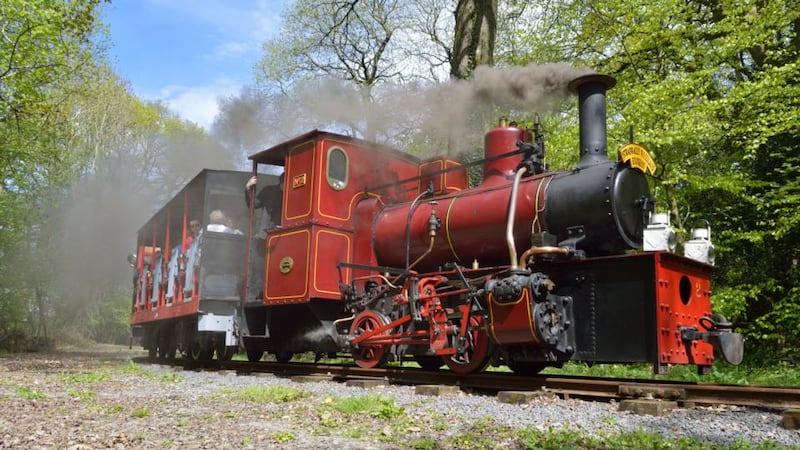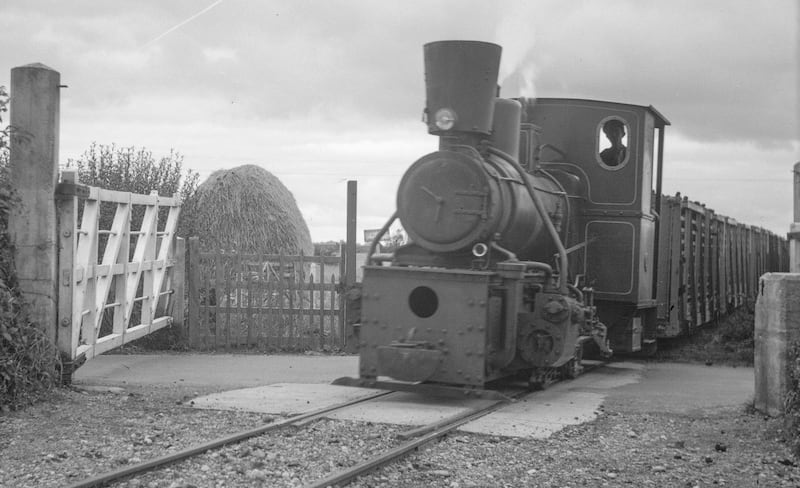It’s fair to say that people just about everywhere hold rose-tinted nostalgic views of all kinds of railways.
Many long-closed lines are lamented by the communities they once served or those who remember them from their childhood. Ireland has a long list of vanished lines that once crossed the country like a giant metal, spider web; just look at a railway map of Donegal before 1960.
CIÉ was quick to move from steam power to diesel and the new had replaced the old in the Republic by 1963, a full five years before British Railways did the same in Britain. Ireland’s lack of natural coal resources and dependence on imported Welsh minerals in particular were major factors in this.
Conversely, there was an exception to the deluge of modern technology.
Bord na Móna was served by early English-built diesel engines on their expansive narrow gauge rail network that served bogs across the country since their initial inception in 1933. The small engines brought, and still do bring, long trains of turf to power stations in the midlands.
In 1949, the company decided to order three steam locomotives from Andrew Barclay’s Caledonia locomotive works in Kilmarnock, Scotland to compare them to their existing motive power.

Experiment
Nos 1, 2 and 3 were delivered in stages in that same year and were put to work on the three-foot gauge networks at Cushina, Co Laois and Clonsast, Co Offaly which served Portarlington generating station. This trio were unusually made to burn turf rather than coal like most steam engines.
They were designed to be operated by just one man at the controls but at the beginning and end of their working lives they ran with both a driver and fireman in the cab.
Strangely, it can be argued they were almost too good for the company that ordered them. They were faster and stronger than the diesels, being able to take bigger loads more quickly and had to wait for them to play catch up.
A steam loco can’t simply be switched off when it’s standing idle so the fire of the engine had to be constantly fed with the turf from the wagons behind. Talk about burning away your profits.
They were also too heavy for most of the lightly-laid lines they ran on, weighing a sizeable 10¾ tons, and damaged the track as a result. Put simply, steam proved too fuel hungry, too fast and too heavy for the existing network and significant investment would have been needed to combat these issues effectively.
As a result, the working lives of the engines were short and they were out of use by 1954.
Steam locomotives are beautiful, romantic things but they are labour intensive and, at times, back-breaking
Every steam locomotive requires a boiler certificate to be insured for use and these certificates were extended to 1958 by Bord na Móna as a response to the Suez Canal crisis which threatened the supply of diesel fuel.
Ironically, part the original business case for the steam engines was to reduce dependency on imported fuel sources and utilise the indigenous and abundant turf resource.
It may also serve as a unique case of the old-fashioned and supposedly out-of-date steam power serving as the experimental element of an operation, rather than the newer diesel technology.
Survival
Fortunately, or rather uniquely in Irish railway preservation, all three engines survive today.
No 1 eventually ended up on the Talyllyn Railway in Wales – the first of its kind in the world to be taken over and worked entirely by volunteers – coming via Stradbally in late 1960s and No 3 now resides, out of use, at the Giant’s Causeway and Bushmills Railway in Co Antrim.
No 2 is based at the Stradbally Woodland Railway in Stradbally, Co Laois, Ireland’s first volunteer-run heritage railway. It has been there since 1969 and will celebrate its 70th birthday over the May bank holiday weekend. It will be named to mark this occasion and the railway will be open to the public on the bank holiday Sunday and Monday.

The name is being given to mark not only the engine’s birthday – having been delivered to Bord na Móna on May 6th, 1949 – but also to recognise the railway’s 50th year in operation.
The annual Stradbally Steam Rally over the August Bank holiday weekend will mark its half-century.
As a volunteer on the line, I can attest it is no easy task to keep the railway running for the public. Year-round maintenance is needed. Steam locomotives and railways are beautiful, romantic things but they are labour intensive and, at times, back-breaking.
Constant upkeep is needed to ensure we can continue to bring a day out with a difference to members of the public and, crucially, help preserve part of one Ireland’s few major industries. We’re a small group but are always looking for extra volunteers to lend a hand.
The old railways are long gone but there are those of us determined that at least some part of them will live on. Here’s to the next 50 years.
[ facebook.com/stradballywoodlandrailwayOpens in new window ]














